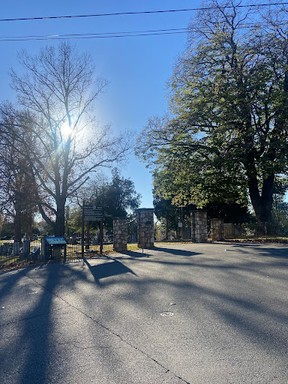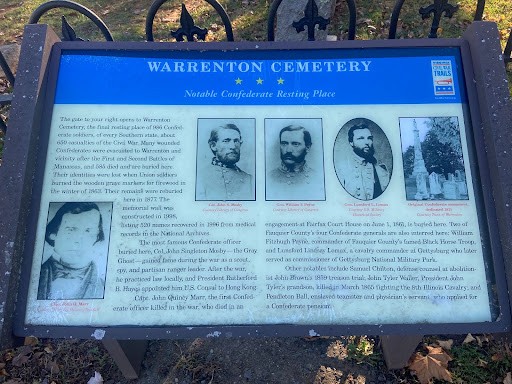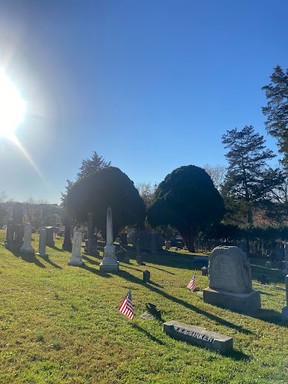Warrenton Cemetery
Introduction
Text-to-speech Audio
Over 8,000 people have been laid to rest in the roughly 18-acre Warrenton Cemetery. Although currently, the Town of Warrenton is responsible for its upkeep, most of the burial plots are owned by families from Fauquier County. Originally the site of the Norris family cemetery, the town of Warrenton purchased the land in 1828, turning it into the town's cemetery. Throughout the 19th century additional land purchases increased the size of the cemetery to accommodate the needs of the growing community.
Images




Backstory and Context
Text-to-speech Audio
In 1828, Warrenton Town Council purchased 1.25 acres for this public cemetery. The lot, which already contained the Norris Family Cemetery, became the Warrenton Cemetery. It was purchased for $62.50 from Thaddeus Norris' estate and was located south of Jail Street on Warrenton's western border, now titled Waterloo Street. In 1858, Thaddeus Norris’s estate lot was built on the eastern side of the cemetery. In 1866, two plots were added to the south side of the cemetery. One was 1.75 acres, sold for $400.00, by the daughter of Thaddeus Norris, named Ann Brooke. The other was 1.5 acres, sold by William and Mary Gaines.
In 1873, Fauquier Memorial Association built a 30-foot Confederate grave memorial. In 1875, there was added the African American burial portion of the cemetery using two acres sold by the Gaines family for $407.50 and additional land sold by Mrs. Brooke. In 1929, an acreage of 9.59 acres, known as the “New Section,” was added to the cemetery, which Lucien Keith sold for $4,500. (Warrenton Town website)
In the last years of the 19th century, there were nationwide pandemics. While many people were resting in peace in American cemeteries, other people who were still alive used to meet on their graveyards to eat and enjoy a relaxing time together with their deceased relatives, utilizing them as public parks. (Atlas Obscura)
The Grey Ghost:
One of the most noteworthy people buried at the cemetery was longtime Warrenton resident Confederate Colonel John Singleton Mosby (1833-1916), who commanded a "special forces" ranger army cavalry battalion known as “Mosby’s Rangers” in Loudoun and Fauquier counties during the American Civil War. Union officers made numerous attempts to apprehend him, but he eluded them all, gaining the nickname of “The Gray Ghost” due to his great capacity to appear, attack, and disappear without being captured. After the war, President Ulysses S. Grant pardoned Mosby, who had a price offered for his head, and began working for the federal government. Some people thought he betrayed his cause, while others revered him. He left for Washington, DC, to work as a lawyer and diplomat for some time. In his final years, he came back to Warrenton. (National Museum of American History)
Sources
Meet John S. Mosby, "Gray Ghost" of the Confederacy, National Museum of American History. Accessed January 13th, 2023. https://americanhistory.si.edu/blog/2013/12/meet-john-s-mosby-the-gray-ghost-of-the-confederacy.html.
Remembering When Americans Picnicked in Cemeteries, Atlas Obscura. Accessed January 13th, 2023. https://www.atlasobscura.com/articles/picnic-in-cemeteries-america.
Warrenton Cemetery, Warrenton, VA. Accessed January 13th, 2023. https://warrentonva.gov/161/Warrenton-Cemetery.
Emily Crespo Collection
Emily Crespo Collection
Emily Crespo Collection
Emily Crespo Collection
